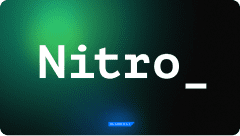Have you ever found yourself staring at a piece of writing, feeling that something is missing, but you can't quite put your finger on it? You're not alone. Many copywriters and content creators face this challenge daily, wrestling with how to transform their good writing into something truly great. The struggle to engage readers, convey messages clearly, and maintain interest throughout is a common plight in the world of writing. Crafting compelling content isn't just about having a good grasp of grammar or a vast vocabulary; it's about understanding the nuances that make text resonate with its intended audience.
In a digital age where content is king, the ability to elevate your writing skills from ordinary to exceptional is more crucial than ever. Here are ten sophisticated, practical writing tips that go beyond the basics of "write clearly" and "know your audience," aimed at refining your writing craft:
Read also our articles related to this topic:
How to build a content marketing strategy from scratch
SEO content marketing: a synergistic approach to digital success
1. Embrace the power of precision
Choosing the right word can transform a vague sentence into a vivid, compelling statement. Precision in language selection not only clarifies your message but also enriches the reader's experience. Here’s how to improve writing skills through precision:
- Opt for specific over general words: Replace broad terms with specific details to paint a clearer picture. For instance, use 'scarlet' instead of 'red' when describing an object to give readers a precise visual.
- Avoid jargon and clichés: While specialized terms are necessary in certain contexts, overly technical language or clichés can alienate readers. Strive for clarity and simplicity.
- Use active verbs: Active verbs impart energy and directness to your writing. Choose 'conducted' over 'was conducting' to make your sentences more dynamic.
By focusing on precision, your writing becomes more engaging and memorable, leaving a lasting impact on your audience.
2. Employ the Pyramid Principle
Learning how to improve your writing skills often involves adopting strategies like the Pyramid Principle, originally developed by Barbara Minto at McKinsey & Company. This approach is counterintuitive to the traditional narrative arc, which builds up to a climax. By stating your main point or conclusion first, you immediately clarify your message and engage readers who value their time.
Following your opening with supporting arguments or evidence in a hierarchical structure keeps your writing crisp and persuasive. This method is especially effective in business writing, where decision makers appreciate directness and clarity.
To implement this technique, begin with a compelling opening sentence that summarizes your core message. Follow this with layers of supporting information, organized in a logical order. Each layer should provide evidence or arguments that reinforce your initial statement. This strategic approach is a practical step for those pondering how to get better at writing, as it keeps your writing crisp and persuasive.
3. Integrate questions to engage readers
Incorporating questions into your writing can actively engage your readers, prompting them to think critically about the topic at hand. Here's how a simple integration of a question can change the tone and engagement level of your writing:
Before: "Many professionals find networking at conferences to be a powerful tool for career development. It allows for the exchange of ideas and can lead to job opportunities."
After: "Have you ever considered how networking at conferences can transform your career? Imagine exchanging ideas and uncovering job opportunities just by striking up conversations."
The revised version invites the reader into a dialogue, making the text more interactive and thought-provoking. This approach captures attention and encourages readers to reflect on their experiences and perspectives, showcasing effective writing techniques.
4. Optimize readability with design
While often overlooked, the visual presentation of your text plays a critical role in its readability and impact. To optimize readability through design:
- Use headings and subheadings to break up text and guide readers through your content. This structural element helps readers scan your document and find information more easily.
- Employ bullet points or numbered lists to present lists or series of points clearly and concisely. This formatting choice can make complex information more digestible and engaging.
- Choose fonts and spacing that enhance readability. A clean, clear font and adequate spacing between lines and paragraphs can significantly improve the reader's experience, making your text more accessible and enjoyable to read.
By paying attention to the design elements of your text, you can enhance its overall readability, ensuring that your message is not only received but also appreciated and understood by your audience.
5. Integrate data and research to bolster credibility

Incorporating data, statistics, and findings from reputable research can significantly enhance the credibility and persuasiveness of your writing. Not only do these elements provide concrete evidence to support your claims, but they also demonstrate thoroughness in your research process.
- Select relevant data: Choose data and research findings that directly support your main points or arguments. Relevance is key to ensuring that these elements strengthen your narrative, aligning with effective writing strategies.
- Cite sources accurately: Always provide proper attribution for the data and research you incorporate. This not only avoids plagiarism but also allows readers to verify the information themselves.
- Present data clearly: Use graphs, charts, or infographics to present complex data in a more digestible and visually appealing format. Even in text-heavy documents, a well-placed visual can illuminate your points more effectively than paragraphs of explanation.
By carefully weaving in data and research, you ensure that your writing is grounded in fact, enhancing its impact and reliability. This approach is invaluable in academic writing, business reports, and journalistic pieces, where evidential support is paramount.
6. Leverage the power of storytelling
Understanding how to become a better writer often involves mastering the art of storytelling. Even in contexts that demand formality and factuality, the incorporation of narrative elements can dramatically boost reader engagement and the memorability of your content. Stories act as a universal language, touching the human experience with their ability to evoke emotions and forge connections in ways that standalone data simply cannot.
By skillfully weaving narrative elements into your text, you can turn abstract concepts into relatable stories, significantly enhancing the appeal and accessibility of your writing. Storytelling in writing doesn't necessitate transforming every piece into a novel. It can be as straightforward as integrating a relevant anecdote to highlight a point, drawing parallels to familiar tales, or using case studies and examples that bring your message to life.
The goal is to achieve a balance that adds warmth and relatability to your writing without sacrificing its purpose or professionalism. This approach demonstrates how writing techniques can be used to not only inform but also engage and resonate with your audience.
7. Cut redundant words and phrases

Eliminating unnecessary words or phrases can make your writing clearer and more direct. Redundancy often dilutes the impact of your message, so pruning your text can significantly enhance its effectiveness.
Before: The fact of the matter is that many individuals often find themselves using redundant phrases that are actually unnecessary and do not add any real value to the sentence.
After: Many individuals use redundant phrases that add no value to the sentence.
In the revised sentence, the message is more concise and straightforward, removing filler phrases that contribute to verbosity without enhancing meaning. This practice is essential for those wondering how to write better, as it sharpens the clarity and precision of your communication.
8. Utilize varied sentence structures
Avoiding monotony in your writing is crucial for maintaining reader interest. Incorporating varied sentence structures can transform your text from dull to dynamic, a vital aspect of advanced writing strategies. Here's how:
- Mix short and long sentences: Balance brief, impactful sentences with longer, more descriptive ones to keep the reader's attention.
- Start sentences differently: To get better at writing, prevent repetitiveness by beginning sentences with different words or phrases.
- Employ different sentence types: Use a combination of declarative, interrogative, imperative, and exclamatory sentences to add depth and variety to your narrative.
This approach ensures your writing remains engaging and prevents readers from becoming disinterested due to predictability.
9. Apply the rule of three
The rule of three is a classic writing principle that suggests ideas or elements presented in threes are more memorable and engaging. Here's how to leverage this in your writing:
- Structure ideas in threes: When providing examples, arguments, or concepts, grouping them into sets of three can make your content more appealing and easier to follow.
- Use triadic phrases: Implementing sets of three adjectives or phrases can make your descriptions more impactful and rhythmic, a subtle yet effective method for those learning how to write better.
- Narrative arc in threes: Many effective stories are structured around a three-part framework: setup, confrontation, and resolution. This structure can help improve the flow and coherence of your text.
Incorporating the rule of three enhances the readability of your text and aids in making your content more memorable and persuasive to your audience.
10. Explore the art of metaphor and analogy
Learning how to write better often involves mastering the use of metaphors and analogies, a powerful technique to make complex or abstract concepts more understandable to your audience. By drawing parallels between a difficult idea and something familiar to the reader, you can illuminate your message in a vivid and engaging manner. This method taps into the reader's existing knowledge and experiences, making your writing more accessible and memorable.
For example, describing a company's growth strategy as "planting seeds for future harvest" instantly conveys the concept of investing resources now for long-term benefits. Similarly, comparing the structure of a software program to the foundation of a house can help non-technical readers grasp the importance of building on a solid base.
To effectively employ this technique, identify the core idea you wish to convey, then think of an object, scenario, or process familiar to your audience that shares similar characteristics or functions. Introduce your metaphor or analogy early in your discussion to set the stage for deeper exploration of your topic. This not only enhances understanding but also adds a layer of creativity to your writing, making it more engaging and thought-provoking.
Conclusion
In sum, transforming good writing into great writing requires attention to detail, precision, and a deep understanding of your audience's needs and expectations. The ten advanced strategies highlighted in the article — from embracing precision and the Pyramid Principle to integrating questions and optimizing readability with design — serve as a comprehensive guide for writers aiming to elevate their craft. These writing strategies are not just theoretical; they are practical tools that, when applied diligently, can significantly enhance the impact and engagement of your content.
At Alconost, our copywriters embody these principles in every piece they craft. Following all the writing techniques listed in the article, they create texts that not only captivate and engage but also help our clients achieve their business goals. With a focus on clarity, engagement, and precision, our team ensures that every word serves a purpose and every sentence moves the reader closer to action. By choosing Alconost for your copywriting needs, you're not just getting well-written content; you're investing in texts that are designed to perform, resonate with your audience, and drive your business forward.
Alconost is an internet marketing agency that offers search engine optimization for multilingual websites as well as PPC management, SMM and Content marketing. We conduct full SEO audits and website optimization, improve website usability, develop an international promotion strategy and analyze statistics and many others to increase your profits and improve your positions in search engines.
Services you can be interested in:








